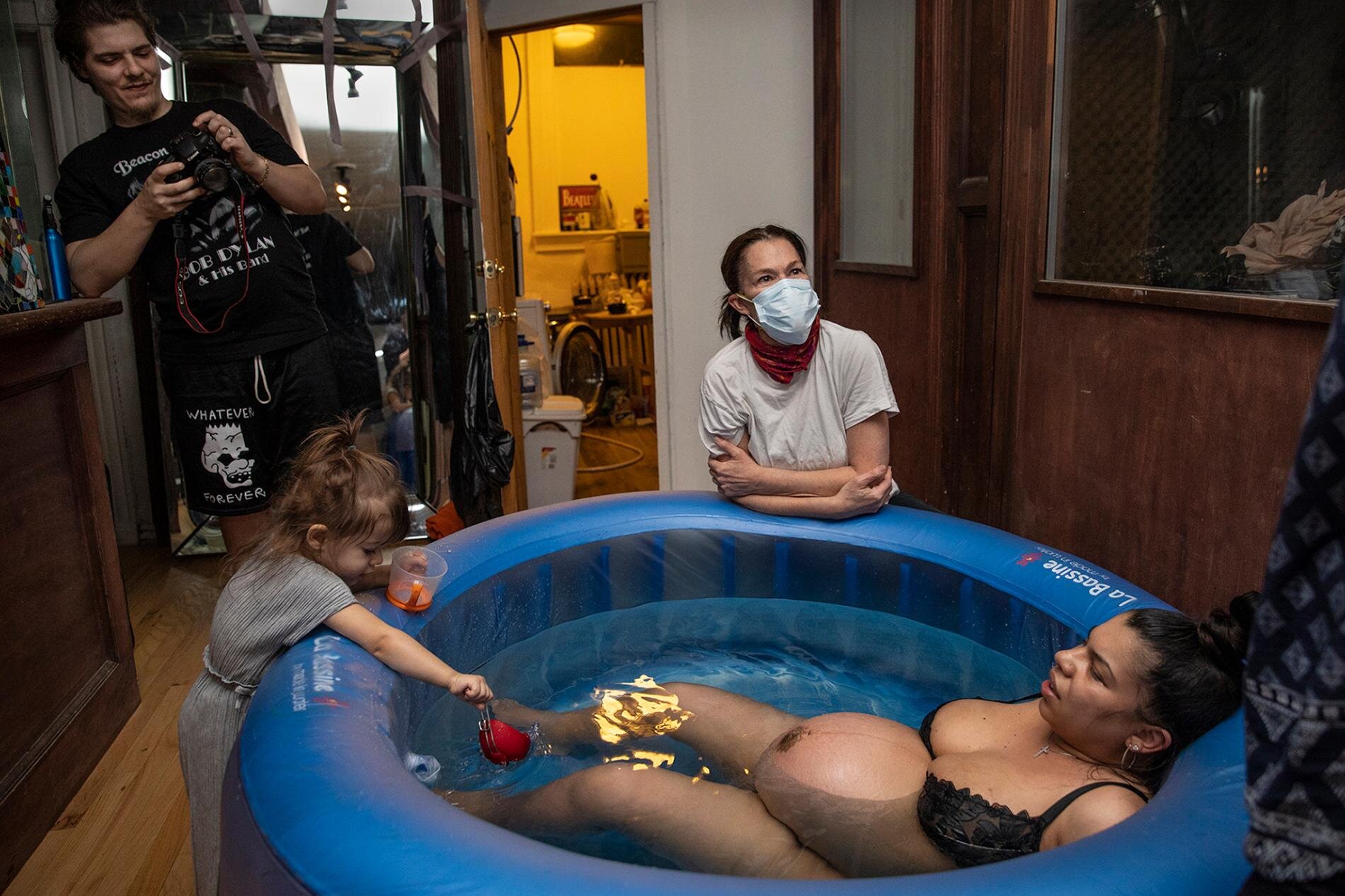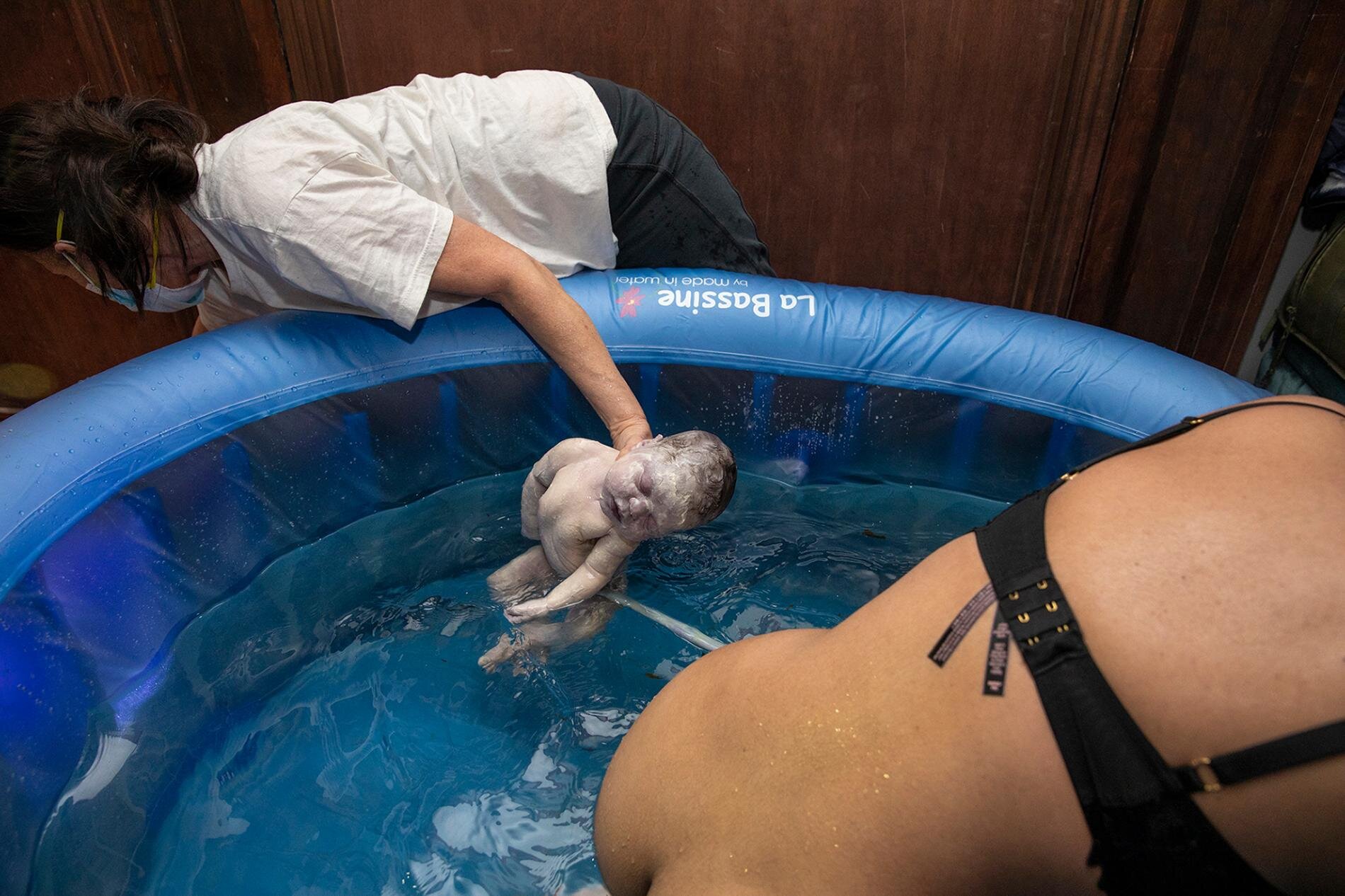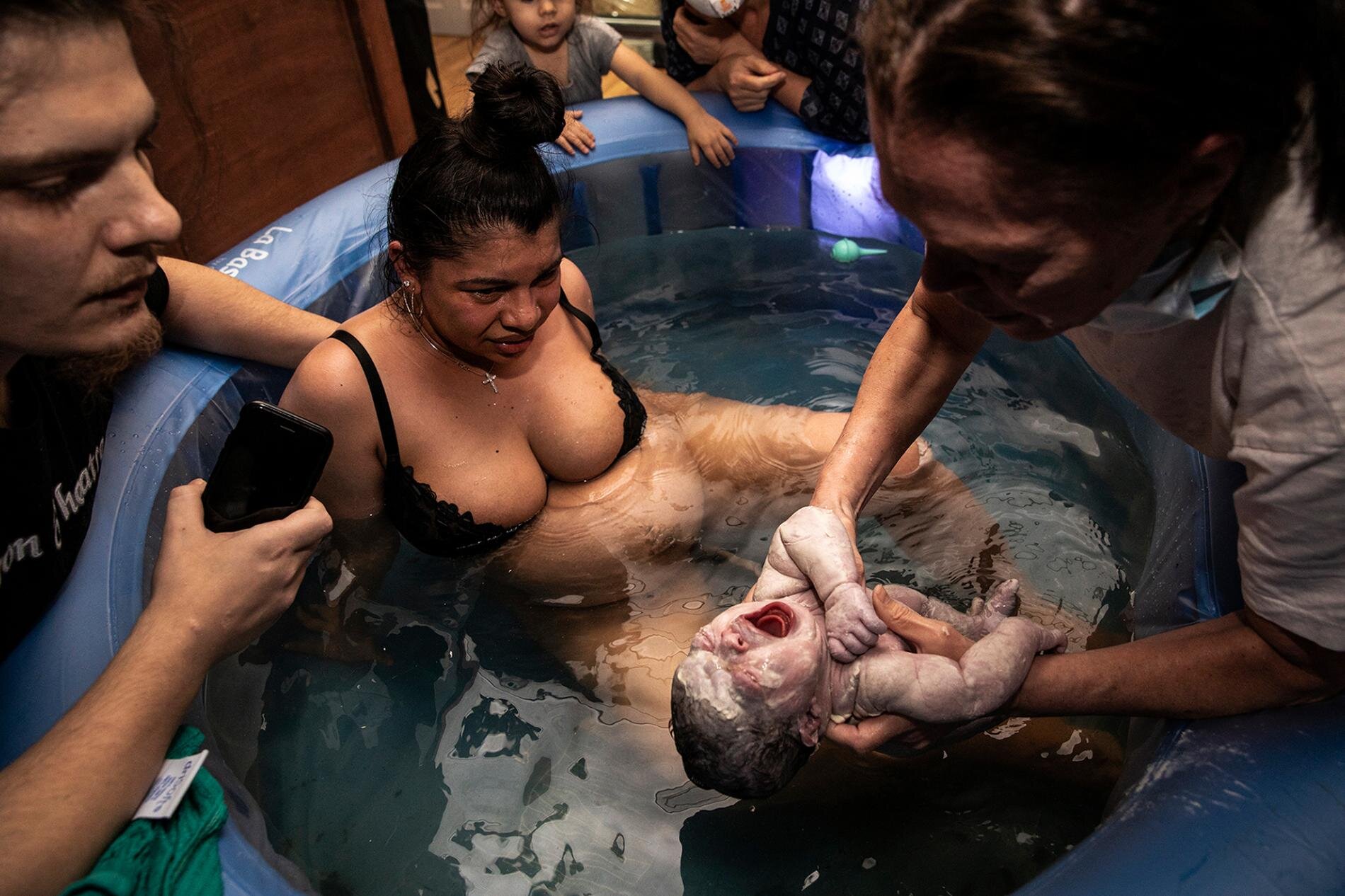When 33- year-old Kimberly Bonsignore learned in late March that her family members would not be able to join her at NYU Hospital during her labor and delivery, she began making plans for a home birth. Pregnant with her second child, she didn’t want to leave her husband, Al, and two-year-old daughter, Sativa, out of the experience.
“I wanted my daughter to be there, too, because I want her to really experience it,” says Bonsignore. “I didn’t want to come home and say, ‘here’s your sister,’ like she’s a puppy or something.”
After the New York-Presbyterian and Mt. Sinai Hospital networks banned all visitors from labor and delivery rooms in an effort to prevent the spread of COVID-19, midwives across the city received a surge of phone calls. Not wanting to give birth alone, many women searched for an alternative.
Read the full story in National Geographic: Writing by Jaenique Hurlock
TW: Please note this story includes sensitive content and imagery of an infants resuscitation.












